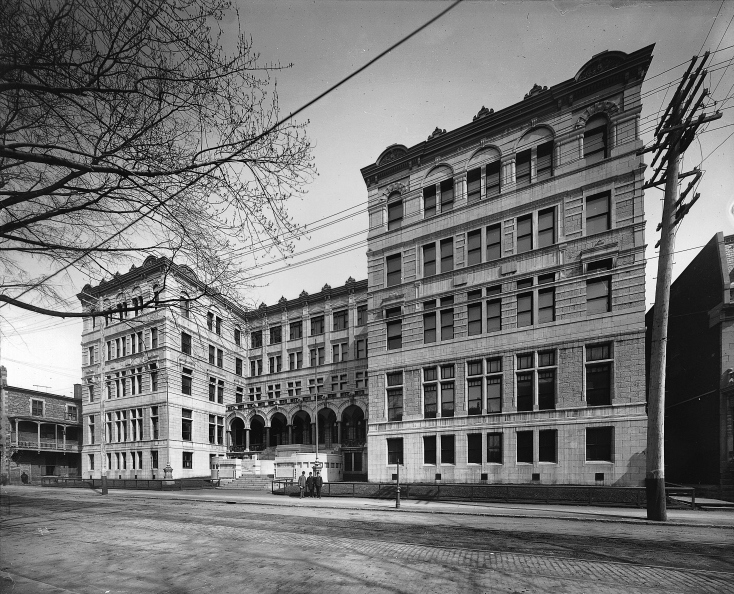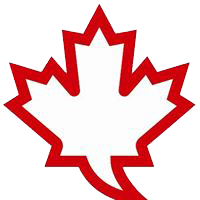|
Farmers' Creditors Arrangement Act
The ''Farmers' Creditors Arrangement Act'', (french: Loi sur les arrangements entre cultivateurs et créanciers) was an Act of the Parliament of Canada that attempted to remedy a wave of insolvencies that occurred among Canadian farmers during the Great Depression. Originally framed to deal with such problems nationwide, it was gradually reduced in scope, and was reenacted in 1943 to apply solely to farmers in the Prairie Provinces. Background By 1934, the farm debt problem in Canada, which had been provoked by the Great Depression, reached a scale where provincial moratory legislation could not resolve it, as it could not remove the farmer from his position of default. The last agricultural census reported that 244,201 farms (33.61% of all farms in Canada) reported having mortgages totalling $677,000,000 (16.75% of the value of all farms, or 49% of the value of owned farms). Cash flow problems also resulted in a significant increase in the amount of short-term obligations. It ... [...More Info...] [...Related Items...] OR: [Wikipedia] [Google] [Baidu] |
Parliament Of Canada
The Parliament of Canada (french: Parlement du Canada) is the federal legislature of Canada, seated at Parliament Hill in Ottawa, and is composed of three parts: the King, the Senate, and the House of Commons. By constitutional convention, the House of Commons is dominant, with the Senate rarely opposing its will. The Senate reviews legislation from a less partisan standpoint and may initiate certain bills. The monarch or his representative, normally the governor general, provides royal assent to make bills into law. The governor general, on behalf of the monarch, summons and appoints the 105 senators on the advice of the prime minister, while each of the 338 members of the House of Commons – called members of Parliament (MPs) – represents an electoral district, commonly referred to as a ''riding'', and are elected by Canadian voters residing in the riding. The governor general also summons and calls together the House of Commons, and may prorogue or dissolve Parliament, ... [...More Info...] [...Related Items...] OR: [Wikipedia] [Google] [Baidu] |
Property And Civil Rights
Section 92(13) of the ''Constitution Act, 1867'', also known as the property and civil rights power, grants the provincial legislatures of Canada the authority to legislate on: It is one of three key residuary powers in the ''Constitution Act, 1867'', together with the federal power of peace, order and good government and the provincial power over matters of a local or private nature in the province. Extent Provincial jurisdiction over property and civil rights embraces all private law transactions, which includes virtually all commercial transactions. Note that "civil rights" in this context does not refer to civil rights in the more modern sense of political liberties. Rather, it refers to private rights enforceable through civil courts. This power is generally balanced against the federal trade and commerce power and criminal law power. With respect to the former, In the '' Insurance Reference'', Viscount Haldane noted that: It is the most powerful and expansive of the pr ... [...More Info...] [...Related Items...] OR: [Wikipedia] [Google] [Baidu] |
Canadian Insolvency Legislation
Canadians (french: Canadiens) are people identified with the country of Canada. This connection may be residential, legal, historical or cultural. For most Canadians, many (or all) of these connections exist and are collectively the source of their being ''Canadian''. Canada is a multilingual and multicultural society home to people of groups of many different ethnic, religious, and national origins, with the majority of the population made up of Old World immigrants and their descendants. Following the initial period of French and then the much larger British colonization, different waves (or peaks) of immigration and settlement of non-indigenous peoples took place over the course of nearly two centuries and continue today. Elements of Indigenous, French, British, and more recent immigrant customs, languages, and religions have combined to form the culture of Canada, and thus a Canadian identity. Canada has also been strongly influenced by its linguistic, geographic, and e ... [...More Info...] [...Related Items...] OR: [Wikipedia] [Google] [Baidu] |
Canadian Federal Legislation
Canadians (french: Canadiens) are people identified with the country of Canada. This connection may be residential, legal, historical or cultural. For most Canadians, many (or all) of these connections exist and are collectively the source of their being ''Canadian''. Canada is a multilingual and multicultural society home to people of groups of many different ethnic, religious, and national origins, with the majority of the population made up of Old World immigrants and their descendants. Following the initial period of French and then the much larger British colonization, different waves (or peaks) of immigration and settlement of non-indigenous peoples took place over the course of nearly two centuries and continue today. Elements of Indigenous, French, British, and more recent immigrant customs, languages, and religions have combined to form the culture of Canada, and thus a Canadian identity. Canada has also been strongly influenced by its linguistic, geographic, and e ... [...More Info...] [...Related Items...] OR: [Wikipedia] [Google] [Baidu] |
History Of Agriculture In Canada
In the 16th century Samuel de Champlain and Gabriel Sagard recorded that the Iroquois and Wyandot people, Huron cultivated the soil for maize or "Indian corn". Maize (''Zea mays''), potatoes (''Solanum tuberosum''), beans (''phaseolus''), squash (plant), squash (''Cucurbita'') and the sunflower (''Helianthus annus'') were grown throughout agricultural lands in North America by the 16th century. As early as 2300 BC evidence of squash was introduced to the northeastern woodlands region. Archaeological findings from 500 AD have shown corn cultivation in southern Ontario. Eastern Canada was settled well before the Western Canada, West. Immigration and trading posts came later to Rupert's Land and the Territorial evolution of Canada, Northwest Territories. The early immigrants combined European agricultural and domestication procedures with the indigenous knowledge of the land and animals of the area. As early as 1605, the French Acadians built dike (construction), dikes in ... [...More Info...] [...Related Items...] OR: [Wikipedia] [Google] [Baidu] |
Great Depression In Canada
The worldwide Great Depression of the early 1930s was a social and economic shock that left millions of Canadians unemployed, hungry and often homeless. Few countries were affected as severely as Canada during what became known as the "Dirty Thirties," due to Canada's heavy dependence on raw material and farm exports, combined with a crippling Prairies drought known as the Dust Bowl. Widespread losses of jobs and savings ultimately transformed the country by triggering the birth of social welfare, a variety of populist political movements, and a more activist role for government in the economy. In 1930-1931 the Canadian government responded to the Great Depression by applying severe restrictions to entry into Canada. New rules limited immigration to British and American subjects or agriculturalists with money, certain classes of workers, and immediate family of the Canadian residents. Economic results By 1930, 30% of the labour force was out of work, and one fifth of the popula ... [...More Info...] [...Related Items...] OR: [Wikipedia] [Google] [Baidu] |
Université De Montréal
The Université de Montréal (UdeM; ; translates to University of Montreal) is a French-language public research university in Montreal, Quebec, Canada. The university's main campus is located in the Côte-des-Neiges neighborhood of Côte-des-Neiges–Notre-Dame-de-Grâce on Mount Royal near the Outremont Summit (also called Mount Murray), in the borough of Outremont. The institution comprises thirteen faculties, more than sixty departments and two affiliated schools: the Polytechnique Montréal (School of Engineering; formerly the École polytechnique de Montréal) and HEC Montréal (School of Business). It offers more than 650 undergraduate programmes and graduate programmes, including 71 doctoral programmes. The university was founded as a satellite campus of the Université Laval in 1878. It became an independent institution after it was issued a papal charter in 1919 and a provincial charter in 1920. Université de Montréal moved from Montreal's Quartier Latin to its pr ... [...More Info...] [...Related Items...] OR: [Wikipedia] [Google] [Baidu] |
Canadian Journal Of Economics And Political Science
Canadians (french: Canadiens) are people identified with the country of Canada. This connection may be residential, legal, historical or cultural. For most Canadians, many (or all) of these connections exist and are collectively the source of their being ''Canadian''. Canada is a multilingual and multicultural society home to people of groups of many different ethnic, religious, and national origins, with the majority of the population made up of Old World immigrants and their descendants. Following the initial period of French and then the much larger British colonization, different waves (or peaks) of immigration and settlement of non-indigenous peoples took place over the course of nearly two centuries and continue today. Elements of Indigenous, French, British, and more recent immigrant customs, languages, and religions have combined to form the culture of Canada, and thus a Canadian identity. Canada has also been strongly influenced by its linguistic, geographic, and e ... [...More Info...] [...Related Items...] OR: [Wikipedia] [Google] [Baidu] |
Canadian Club Of Toronto
The Canadian Club of Toronto, now known as Canadian Club Toronto, is a non-profit speakers' forum in Toronto, Ontario. It meets several times a month to hear speeches given by invited guests from diverse fields, including politics, law, business, science, media and the arts. History The Canadian Club of Toronto was founded in 1897 to encourage interest in Canadian public affairs. It subsequently developed a role as an opinion-formation vehicle for some of Toronto's most prominent citizens. Speeches were initially given in the evening, but starting in 1902, the club moved to its present lunchtime format. In 1903, several members of the Canadian Club, concerned that the club was not sufficiently opposed to the wave of anti-British sentiment being expressed in the wake of the Alaskan Boundary Tribunal decision, left the Canadian Club to found the more pro-British Empire Club of Canada. In the days before radio and television, the club provided a chance for influential Torontonians ... [...More Info...] [...Related Items...] OR: [Wikipedia] [Google] [Baidu] |
Farm Debt Review Act
The ''Farm Debt Review Act'' (french: Loi sur l'examen de l'endettement agricole) was an Act of the Parliament of Canada dealing with the farm crisis affecting Canadian agriculture in the 1980s. It was in force from 1986 to 1998. Background Farm credit increased significantly in the late 1970s as Canadian farmers expanded their operations to meet greater world demand with expectations of continuing high commodity prices for their production., at p. 14788 In the early 1980s, prices collapsed, and annual interest rates suddenly rose from 10% to as high as 24%. Similar, but more severe, conditions had been previously encountered during the Great Depression of the 1930s. In September 1985, a moratorium had been placed on all foreclosure actions by the Farm Credit Corporation. To provide debt relief on a nationwide basis, the Act was introduced in June 1986, and received Royal Assent later that month. Framework Scope The Act's scope was broad, as noted in its definitions: :* a " ... [...More Info...] [...Related Items...] OR: [Wikipedia] [Google] [Baidu] |
Agriculture And Agri-Food Canada
Agriculture and Agri-Food Canada (AAFC; sometimes Ag-Canada; french: Agriculture et Agroalimentaire Canada)''Agriculture and Agri-Food Canada'' is the applied title under the Federal Identity Program; the legal title is Department of Agriculture and Agri-Food (). is the department of the Government of Canada responsible for the federal regulation of agriculture, including policies governing the production, processing, and marketing of all farm, food, and agri-based products. Agriculture in Canada is a shared jurisdiction and the department works with the provinces and territories in the development and delivery of policies and programs. The minister of agriculture and agri-food (currently Marie-Claude Bibeau) is responsible for the department to Parliament. While the minister is head of the department, and provides policy/political direction, the day-to-day operations of the department are managed by the deputy minister (currently Chris Forbes), who is a public servant. His ... [...More Info...] [...Related Items...] OR: [Wikipedia] [Google] [Baidu] |
.jpg)





